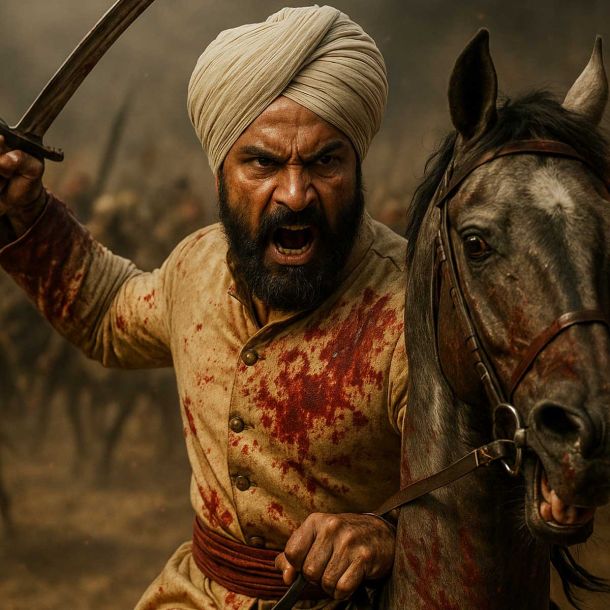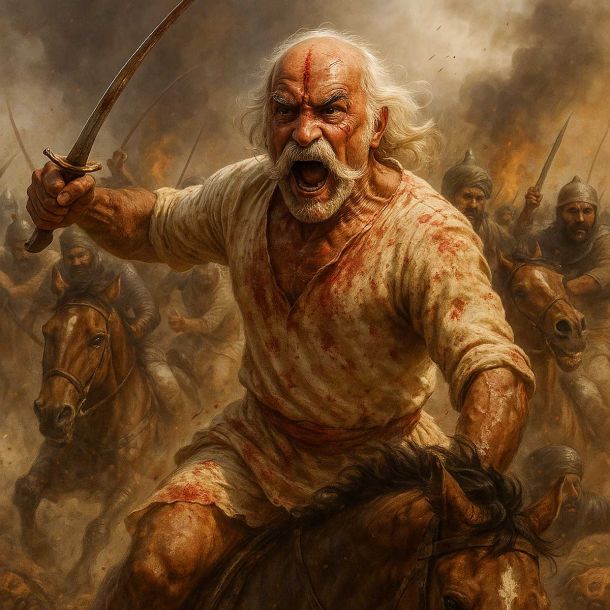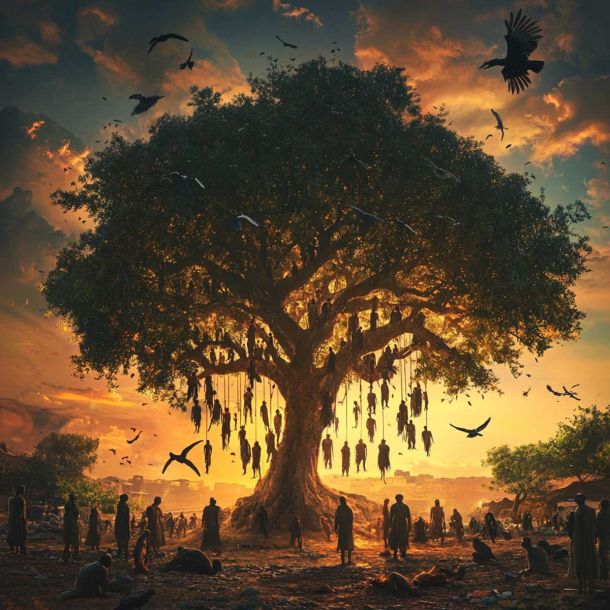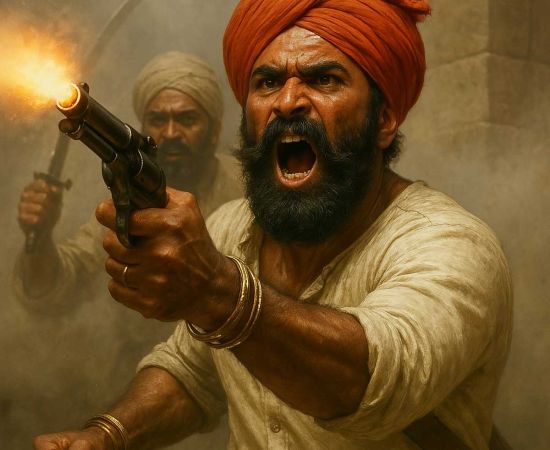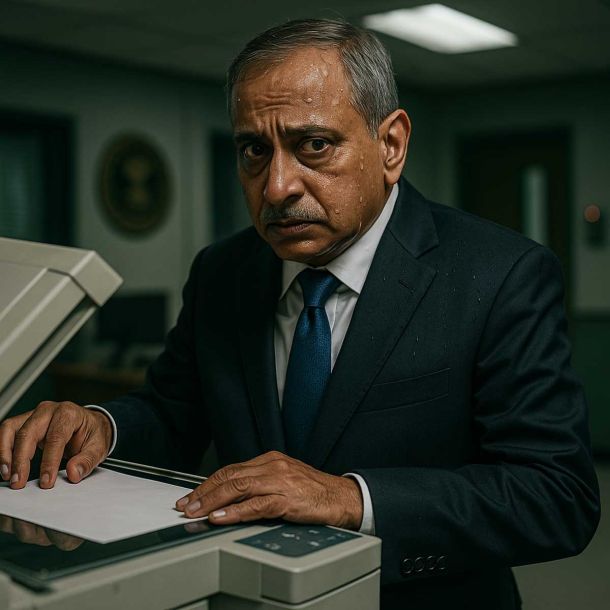MORE COVERAGE
Twitter Coverage
Satyaagrah
Written on
Satyaagrah
Written on
Satyaagrah
Written on
Satyaagrah
Written on
Satyaagrah
Written on
JOIN SATYAAGRAH SOCIAL MEDIA
Hindus saved Sikh Gurus, provided weapons training and donated for Gurudwaras: Shattering the Hindu Vs Sikh narrative
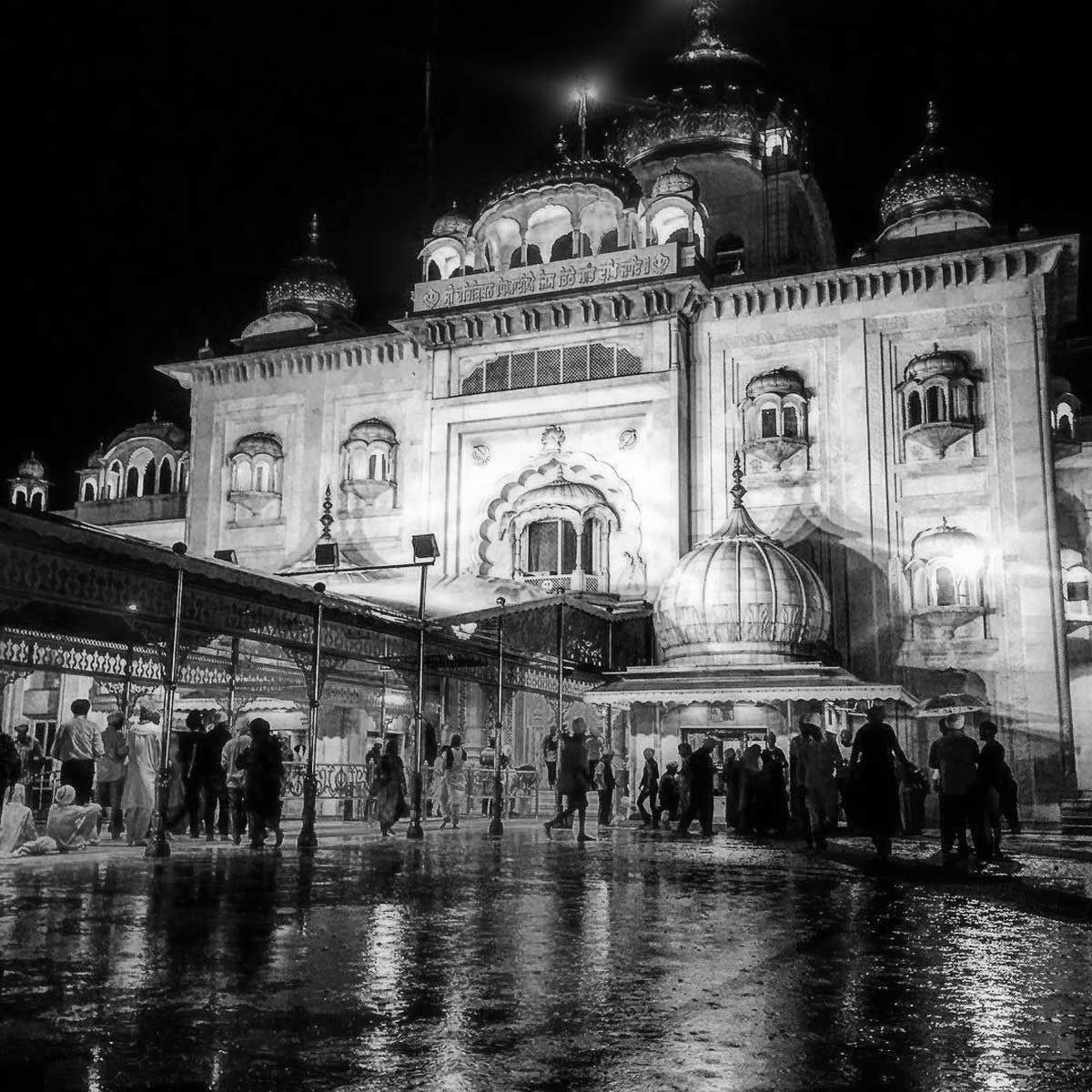
Many Sikhs today continuously try to draw differences between Hinduism and Sikhism. They describe Sikhism as a huge advance over Hinduism. Due to this increasing Hinduphobia among this particular section of the Sikh community, a false narrative is peddled that the Hindus in India were only saved from Islamic invader Aurangzeb’s atrocities and barbarism because the Sikh Guru paid the highest sacrifice for members of ‘other’ religious community and did us Hindus a favour.
On February 9th, 2021, Harsimrat Kaur Badal, an Akali Dal leader stated angrily in the Lok Sabha: “It was our Guru Tegh Bahadur who got beheaded to save your Tilak and Juneau.” When a BJP MP asserted that the Gurus belonged to Hindus as well, Harsimrat Kaur vehemently denied the notion, emphasising that the Gurus only belonged to Sikhs.
 |
A similar narrative was spread during the ‘farmers’ protest, which eventually led Prime Minister Narendra Modi to announce the withdrawal of all three agricultural laws that were passed for the benefit of the farmers.
Yograj Singh, the father of ex-cricketer Yuvraj Singh, had while addressing the farmers last year, proudly reiterated the sentiments with similar rue. “Inki aurate take-take ke bhaw bikti thi” (their women were sold for two cents). When their women and daughters were abducted by people like Ahmed Shah Durrani and sold off for a paltry sum, it was we Sikhs who saved them, Singh had said.
“Tumhari quam ke liye khade na hote, tumhari ma behan biwi ke liye lade na hote, to tumhare waris kabhi bade na hote” (If we have not stood for your religion, if we have not stood for your mothers, sisters and wives, your children would’ve never grown) said a fluffy face Sikh girl rhapsodically with laborious effort in an effort to sound savage – in a short video message; which was later shared by the best selling author from the Sikh community, Harinder S Sikka on his Twitter account. The sonorously angry girl with a discernible supremacist tone and dramatically plain expression continued to add a very casual threat – “Agar pata hota nazre humhi par hai to jis zameen ke taraf bad rahe ho, usi me gade na hote” (If it was known that your eyes are on us, then you would’ve been buried in the same land towards which you’re heading to).
|
Due to this discord between the Hindus and Sikhs, the latter probably needs to revisit history. In this article, we revisit how Mirza Raja Jai Singh I and his son Ram Singh protected Guru Tegh Bahadur from opponents within his own Sikh community.
This is the second article of Hindu-Sikh history series. In the first, we discussed how Guru Nanak’s sons deviated from his father’s path and created the ‘Udasi Panth.’ In addition, the Hindu king had bequeathed his palace to the Connaught Palace Gurdwara in Delhi.
The fact is that until Guru Arjan Dev, the fifth Sikh Nanak (Guru), had the leadership in his hands, Sikhism was never regarded as a separate faith from Hinduism. Till then, Sikhism was not treated as a distinct religion but just a separate sect. Under the leadership of the first five Gurus, Sikhism emphasized universal selflessness and brotherhood. Till then, the Sikhs had not taken up arms. It was the atrocities and barbarism of the Islamic invaders, which had compelled the Sikhs to take up arms. In fact, it was under the leadership of the sixth Sikh guru, Guru Arjan’s son Hargobind that the Sikh community became militarized.
When Guru Arjan Dev was summoned to Lahore by the Mughal Emperor Jahangir, the fifth Sikh Guru possibly suspected that he might never return. Thus before leaving for Lahore, he appointed his son Hargobind as his spiritual successor on May 25, 1606. The 11-year-old became the sixth Sikh Guru.
 |
The execution of Guru Arjan Dev by the Mughal emperor Jahangir in 1606 went on to become a watershed moment for the fledgling Sikh community. As Guru Hargobind took up the Akal Takht or the Eternal Throne after his coronation by ‘Baba Buddha’ he made military training important for his followers, as he remembered his father’s supreme sacrifice.
From that day onwards, Guru Hargobind started carrying two swords. The swords symbolised the philosophy of Miri-Piri. The first sword, Miri, represented temporal power, while the second sword, Piri, represented spiritual prowess. Guru Hargobind redefined the Guru’s persona from that of a spiritual leader to that of a warrior by completely changing the attire.
In addition, he established an army known as the Sant Sipahi, or Saint Soldiers. Soldiers trained in an akhara built in front of the Akal Takht, and combat exercises became a regular feature of the Guru’s camp. As part of their tributes, the Guru instructed his devotees to offer him arms and horses rather than money.
Guru Hargobind transformed the nature of devotional singing, which had been an important aspect of Sikhism since Guru Nanak. His court was dominated by Var or epic combat songs. The execution of Guru Arjan Dev was exemplified as a symbol of sacrifice for the truth. Sikh devotees were instructed to follow the example of Guru Arjan Dev. Guru Hargobind told them it was un-Sikh to endure injustice.
So, it would be ridiculous to assert that Sikhs acquired weapons for the sake of Hindus. The truth is that after Guru Arjan’s execution, the Sikhs took up arms to defend themselves against the Mughal atrocities.
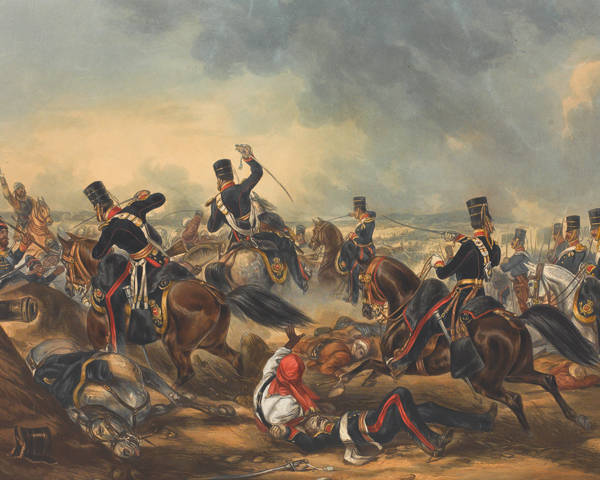 |
Hindus formed an essential part of the Sikh army, were tasked with protecting the Gurus
Do you know that the Rajputs not only trained the Sikhs in fighting and made them a warrior community but also protected Guru Hargobind? It was only with the support of the Rajputs that the Sikhs formed such a fierce army that humbled the mighty Mughal forces on various occasions.
Moreover, Guru Nanak had also visited the Hindu pilgrimages of Kolayat and Pushkar, which were under the Rajputs. He got along well with the Rajputs of Manaswal (Doad). In fact, during his stay at Kartarpur, only a Rajput family would offer him food.
History has it that while Guru Hargobind was imprisoned by the Mughals in the Gwalior Fort, he met a number of Rajput monarchs, and when he was released, he recruited numerous Rajputs into his army.
Rajput warriors named Rai Sigra and Rai Jaita were instrumental in teaching Guru Hargobind and his troops how to use weapons. In the battle of Gurusar, the Rajput army had aided Guru Hargobind. In fact, when Mughal ruler Jahangir was compelled to release Guru Hargobind from the Gwalior Fort, he was accompanied by 52 Hindu princes who from that moment forth always remained loyal to him.
Likewise, Bajar Singh, a descendant of Rao Mandan Singh Rathore, trained Guru Gobind Singh in the intricacies of warfare, as well as in unarmed combat, equestrianism, armed combat, musketry, archery and foot tactics.
One might not be familiar with the name Alam Singh Chauhan Nachna. He was the son of Bhai Durgu, a Rajput of Sialkot who had headed Guru Gobind Singh’s army. Guru Gobind Singh regarded him as his most trusted confidant. He earned the epithet Nachna (dancer) because of his uncommon agility. On one occasion, when Guru Gobind Singh was suddenly attacked, Alam Singh Chauhan Nachna showed exceptional valour and rescued him with the army.
It is believed that Alam Singh Chauhan Nachna went on to play an extremely vital role in almost all the battles fought around Anandpur. As Guru Gobind Singh himself testifies in his Bachitra Natak, when the Khanzada, the son of Dilawar Khan the Subahdar of Lahore, tried to storm Anandpur at night, it was Alam Singh’s vigilance which alerted the Sikhs and forced the Khanzada to retire without completing his assault. Alam Singh sacrificed his life fighting for the Guru’s son Ajit Singh.
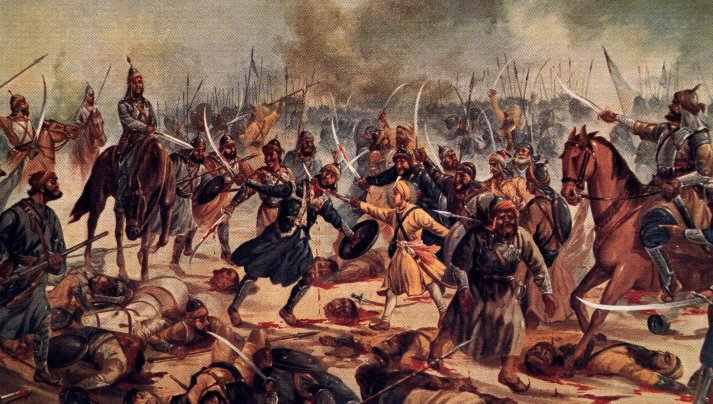 |
Some Sikhs aided the Mughals against their own Gurus
While Hindus always supported the Sikh Gurus, obeyed their orders and helped them, there were some Sikhs who had sided with the Mughals against their own people. One such was Ram Rai, the seventh Guru Har Rai’s eldest son, who had joined the Mughal tyrant Aurangzeb. Compelled by his desire to become a Nanak (guru), Ram Rai incited the Mughals and got Guru Tegh Bahadur arrested. At such a time too it was a Hindu ruler who stepped in to aide Guru Tegh Bahadur, the ninth Nanak, who was the leader of Sikhs from 1665 until his beheading in 1675.
History has it that Ram Rai was sent to Aurangzeb by his father Har Rai as a messenger, but his intentions altered. He formed the ‘Ramraiya’ sect, which was not recognised by the Sikhs. Ram Rai fell from grace when he performed miracles in Aurangzeb’s court and deliberately misinterpreted lines from the Adi Granth to please the Mughal emperor. Asked why Guru Nanak had criticised Islam in the verse Mitti Musalman Ki, Ram Rai satisfied the assembled people in Aurangzeb’s court by saying that the line had been copied incorrectly and that the actual writing was correctly Mitti Beimaan Ki and not Musalman ki. Pleased by Ram Rai, Aurungzeb gave him a jagir of four villages in the Doon area as a reward.
Though Ram Rai managed to please Aurangzeb, Guru Har Rai forbade all Sikhs from ever associating with Ram Rai. Displeased with his elder son Ram Rai, Guru Har Rai declared that his younger son Har Krishan the next Sikh Guru before he passed away in 1661.
Ram Singh got Guru Tegh Bahadur, 9th guru of the Sikhs, released from the captivity of Aurangzeb
Later, Aurangzeb arrested Guru Tegh Bahadur and brought him to Delhi. Aurangzeb issued the orders of Guru’s execution. It is said, Raja Ram Singh of Jaipur, the elder son of Mirza Raja Jai Singh I, pleaded for mercy and was able to convince the Mughal emperor who rescinded the order. He undertook full responsibility for Guru’s conduct to secure his release.
Guru Tegh Bahadur was later beheaded in 1675 on the commands of Aurangzeb for taking up the cause of Kashmiri Pandits and refusing to convert to Islam. Gurudwara Sis Ganj in Delhi is the place where he was beheaded and Gurudwara Rakab Ganj in Delhi is where he was cremated.
It is also recorded in history how Tegh Bahadur gained full backing from Raja Jai Singh against his opponents in his quest to become the 9th Guru.
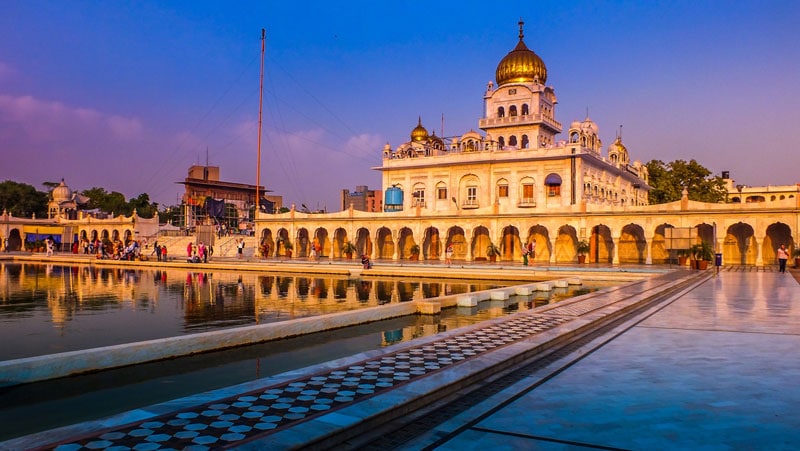 |
The history of ‘Gurdwara Bangla Sahib’ in Delhi
Gurudwara Bangla Sahib, one of the most prominent Sikh gurdwaras, was originally Jaisinghpura Palace, a haveli of the Jaipur kings. It was originally a bungalow owned by Raja Jai Singh. It was in 1664 that Sawai Raja Jai Singh of Amber (Jaipur) hosted Guru Hari Krishan. The guru stayed there for about 8-10 months at a time of cholera and chickenpox epidemics.
|
Raja Jai Singh, who had also supervised the construction of nine Sikh shrines in Delhi in the same year, during the reign of Mughal Emperor, Shah Alam II, later donated the haveli (bungalow), where Sikh General Sardar Baghel Singh first built a small shrine in 1783. After Independence, the place saw rapid changes. The small shrine eventually went on to become the famous Gurudwara Bangla Sahib.
References:
opindia.com - Anupam Kumar Singh
Bilaspur Through Centuries – Capt. Shakti S. Chandel
A History Of Dasanani Naga Sanyasis
https://twitter.com/KshatriyaItihas/status/1335214005573406720?s=19
Kashmir In Conflict – Victoria Schofield Page Number 05
 Support Us
Support Us
Satyagraha was born from the heart of our land, with an undying aim to unveil the true essence of Bharat. It seeks to illuminate the hidden tales of our valiant freedom fighters and the rich chronicles that haven't yet sung their complete melody in the mainstream.
While platforms like NDTV and 'The Wire' effortlessly garner funds under the banner of safeguarding democracy, we at Satyagraha walk a different path. Our strength and resonance come from you. In this journey to weave a stronger Bharat, every little contribution amplifies our voice. Let's come together, contribute as you can, and champion the true spirit of our nation.
 |  |  |
| ICICI Bank of Satyaagrah | Razorpay Bank of Satyaagrah | PayPal Bank of Satyaagrah - For International Payments |
If all above doesn't work, then try the LINK below:
Please share the article on other platforms
DISCLAIMER: The author is solely responsible for the views expressed in this article. The author carries the responsibility for citing and/or licensing of images utilized within the text. The website also frequently uses non-commercial images for representational purposes only in line with the article. We are not responsible for the authenticity of such images. If some images have a copyright issue, we request the person/entity to contact us at This email address is being protected from spambots. You need JavaScript enabled to view it. and we will take the necessary actions to resolve the issue.
Related Articles
- Petition seeking restoration of 27 Hindu, Jain temples inside Quwwat Ul-Islam mosque at Qutub Minar complex rejected by Delhi court
- Only Dhimmis can be a good Hindu – An article on Shekhar Gupta’s ThePrint argues ‘defending namaz’
- Calcutta Quran Petition: A petition to ban the Quran altogether was filed 36 years ago, even before Waseem Rizvi petitioned for removing 26 verses from Quran
- Hindus chanted Ramcharitmanas outside Christian school that had held derogatory Ramleela: Haryana
- Indonesia: Sukmawati Sukarnoputri, daughter of Indonesia's first president becomes a Hindu leaving Islam
- The power of Sanatana Dharma and Fact Analysis of the Supernatural Fire Yogi of Tanjore
- Dangerous plots of Khalistan uprising and Hindu genocide, hurling abuses to Hindu Gods, arrest of Hindus for ‘blasphemy’ when retaliating - The menacing truth of underbelly of Clubhouse
- Propaganda techniques to blame Hindus for violence and paint Muslim aggressors as ‘good samaritans’
- Exclusive: Agitators not farmers but criminals, says wife of victim burnt alive at Tikri border, farmers harass woman of village, says sarpanch
- Why India’s temples must be freed from government control
- Here is the truth about the land deal by Ram Janmabhoomi Teerth Kshetra and how the allegations by likes of AAP are baseless
- 10% of Punjab is now Christian! Why are people converting and what can be done?
- Madras High Court: Do not take decision on melting Temple gold till Trustees are appointed
- PETA India’s latest wisdom – Cows are killed for beef because you are drinking milk and eating cheese
- An Artisan Heritage Crafts Village: Indigenous Sustainability of Raghurajpur
